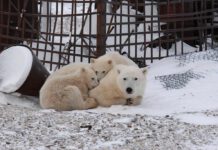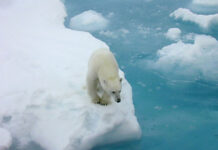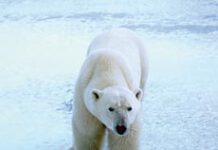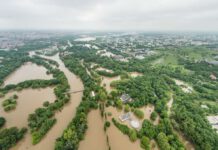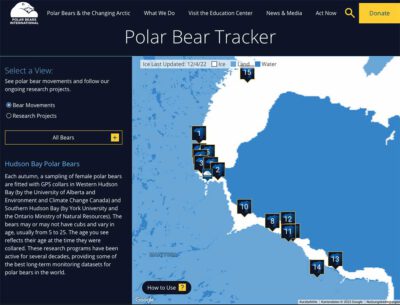
Each year the Polar Bears International Bear Tracker follows GPS-collared female polar bears from the Hudson Bay region, allowing us a glimpse into the secret world of polar bears on the sea ice. This year, we are again tracking bears from both the Western Hudson Bay (WHB) and Southern Hudson Bay (SHB) populations and will be able to compare their movements. We look forward to the months ahead, watching the different decisions these bears make while hunting seals and navigating the shifting ice before they return to land next summer.
GPS tracking is critical when it comes to better understanding polar bear decisions and movements. Fine-scale information about when and where polar bears travel helps us understand what they need and why. This allows us to better predict how bears will respond to shrinking sea ice and, in turn, can help us better protect the species. However, only adult females can wear GPS collars due to the shape of their necksy, which means there is a lot we don't know about adult males and young bears. To help fill gaps in our knowledge, Polar Bears International is spearheading new Burr-on-Fur tags to help us track those bears. Understanding all ages and sexes will allow us to make more effective conservation plans and decisions, especially as the polar bears' sea ice habitat continues to decline.
Polar bears in this region are used to ice-free periods as they live in the Seasonal Sea Ice Ecoregion, where the sea ice melts completely every summer and freezes-up every winter. Though polar bears lose access to their seal prey and mostly fast when on land, losing up to one kilogram per day of body weight, they are well adapted to the feasting/fasting lifestyle as long as they get fat enough before the ice-free period and get back on the ice to hunt seals again within a reasonable timeframe. Hudson Bay saw a relatively on-time break-up this summer and freeze-up was on time this fall. As a result, we saw many healthy bears this fall, including multiple moms with cubs. However, these bears are on land already more than 40 days longer than their grandparents were and, on average, the ice-free season is lengthening about one day/year in Hudson Bay. Continued warming will cause continued pressure on polar bear reproduction and health; the WHB population has already declined more than 30% since the 1980s. We must protect their sea ice habitat before it's too late.
For now, Hudson Bay continues to freeze over and polar bears are searching for blubber to fill their bellies. As the ice has been freezing we have enjoyed watching the bears make different decisions as they slowly move onto the ice forming along the coast. One bear (Yvette) has already headed far north up the coast while others have stayed near Churchill, Manitoba, or even farther south along the coast of Ontario. Each bear is unique and we look forward to following them for the next year, watching where they travel out on the cold, dark, frozen ocean. Though it sounds tough to us, it's a polar bear's paradise—please help us keep it that way!
Polar Bears International
polarbearsinternational.org


